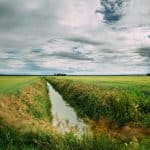Social media has evolved from a mere platform of communication into a powerful tool for mobilizing change. Its wide reach, real-time data access, and interactive nature make it an ideal medium for raising public awareness and garnering support for various causes, including wildlife conservation. Conservation organizations and scientists in the UK and beyond are now leveraging social media platforms like Facebook, Twitter, and Google to drive wildlife conservation initiatives and influence public opinion.
Harnessing the Power of Social Media
Understanding the role of social media in wildlife conservation begins with grasping its vast potential as an awareness-raising tool. Social media platforms such as Twitter and Facebook can disseminate information at a faster rate and to a wider audience than traditional media such as newspapers or television. Employing social media in conservation campaigns can also stimulate public engagement through discussions, debates, and sharing of posts.
This might interest you : What Are the Latest Advances in Electric Bike Technology for UK Commuters?
Given the rising interest in environmental issues, particularly climate change, social media posts on wildlife conservation are likely to resonate with a broad audience. Social media can be used to highlight the importance of biodiversity, the threats facing various species, and the steps that people can take to help. By encouraging users to share these posts, conservation organizations can substantially amplify their reach and impact.
Utilizing Google and Twitter for Conservation
Google and Twitter offer unique opportunities for conservation initiatives. Google Trends provides real-time data on public interest in various topics, enabling conservation organizations to identify and ride on trending environmental issues. On the other hand, Twitter’s potential lies in its ability to facilitate rapid, real-time conversations.
Also to discover : How Can the UK Address the Digital Divide in Remote Learning for Students?
For instance, conservation scientists can use Google Trends to track the popularity of wildlife-related search terms over time. This data can offer invaluable insights into public interest and awareness about different species and conservation issues. By aligning their campaigns with these trends, organizations can maximize their public engagement and impact.
Twitter, with its hashtags and trending topics, offers a perfect platform for driving conservation conversations. By creating and promoting specific hashtags related to wildlife conservation, organizations can generate buzz around their campaigns and engage a wider audience. Twitter also enables real-time interaction with the public, providing opportunities for answering questions, addressing concerns, and fostering a deeper understanding of conservation issues.
Engaging the Public through Citizen Science
Citizen science refers to the engagement of non-professionals in scientific research. It is a powerful tool for wildlife conservation, as it not only generates valuable data but also fosters public interest and involvement in conservation.
Social media can play a critical role in promoting citizen science initiatives. By posting calls for volunteers on social platforms, conservation organizations can attract participants for various projects, such as bird counting, wildlife tracking, or habitat mapping. These volunteers can then share their experiences and findings on social media, further promoting the initiative and encouraging more people to participate.
Driving Change through Social Media
While raising awareness and engaging the public are important, the ultimate goal of conservation campaigns should be to drive tangible change. Social media can be utilized to this end by encouraging individuals to take specific actions in support of wildlife conservation.
For instance, conservation organizations can use their social media platforms to promote sustainable lifestyle choices that help conserve wildlife, such as reducing plastic waste or adopting plant-based diets. They can also leverage social media to rally support for policy change, such as stricter laws against illegal wildlife trade.
Social Media and Science: A Powerful Partnership
The combination of social media and science can be a potent force for wildlife conservation. Scientists can use social media to communicate their research in an accessible and engaging manner, fostering public understanding and appreciation of biodiversity.
For instance, scientists can share their latest findings on the status of endangered species, the impact of climate change on wildlife, or the benefits of wildlife conservation to human health. By doing so, they not only raise awareness about these issues but also help build public trust in science, which is crucial for the success of conservation initiatives.
In conclusion, social media is a powerful tool for wildlife conservation, providing opportunities for awareness raising, public engagement, data collection, and advocacy. By harnessing the potential of platforms like Google and Twitter, promoting citizen science, and leveraging the power of scientific communication, conservation organizations can effectively utilize social media to boost their conservation campaigns and drive real change for wildlife and habitats.
Encouraging Citizen Science through Social Media
Recognizing the importance of citizen science in conservation efforts, social media outlets provide a unique opportunity to engage the public in scientific research. Citizen science is a method for ordinary people, even those without a scientific background, to contribute to scientific research. It is an avenue to generate valuable data and promote public involvement in wildlife conservation.
With the wide reach of social media, conservation organisations can harness its power to call for volunteers for various wildlife conservation projects. For instance, projects that involve bird counting, wildlife tracking, or habitat mapping. These projects often require large participation to gather substantial data. Social media platforms, with their millions of users, provide an ideal venue to generate such participation.
Moreover, volunteers can share their experiences and findings on their personal social networks, creating a ripple effect. This can lead to more people joining the cause, therefore further promoting the initiative. By utilizing social media to promote citizen science, conservation organisations can turn social media users into active participants in wildlife conservation.
Concluding Thoughts: Unleashing the Power of Social Media for Wildlife Conservation
It is clear that social media is an important tool for wildlife conservation. By amplifying public awareness on various conservation issues, providing real-time data access, and promoting active participation, social media platforms can significantly contribute to wildlife protection efforts.
Promotion of sustainable lifestyle choices such as reducing plastic waste or adopting plant-based diets can be easily disseminated through these platforms. Furthermore, rallying support for stricter policies against illegal wildlife trade can also be done through these channels.
The combination of social media and science also creates a powerful partnership in conservation. Scientists can utilise these platforms to communicate their research to a larger audience, fostering public understanding and appreciation of biodiversity.
In the context of the United Kingdom, social media can play a pivotal role in galvanising support for wildlife conservation. By harnessing the power of social media, we can create a wave of change that will bring about positive impacts for wildlife conservation. From awareness raising to active participation, social media can indeed be a game-changer in the world of conservation.
The call to action now is for everyone to utilise social media responsibly and effectively. Let us use it not just to communicate and socialise, but to champion causes that matter, like wildlife conservation. After all, every single effort counts when it comes to preserving our planet’s precious biodiversity.






